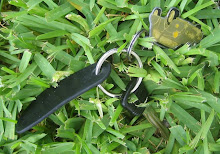Abu Simbel is an archaeological site comprising two massive rock temples in southern Egypt on the western bank of Lake Nasser. It is part of the UNESCO World Heritage Site known as the "Nubian Monuments", which run from Abu Simbel downriver to Philae (near Aswan).
The twin temples were originally carved out of the mountainside during the reign of Pharaoh Ramesses II in the 13th century BC, as a lasting monument to himself and his queen Nefertari, to commemorate his alleged victory at the Battle of Kadesh, and to intimidate his Nubian neighbors. However, the complex was relocated in its entirety in the 1960s, on an artificial hill made from a domed structure, high above the Aswan dam reservoir.
The relocation of the temples was necessary to avoid their being submerged during the creation of Lake Nasser, the massive artificial water reservoir formed after the building of the Aswan dam on the Nile River. Abu Simbel remains one of Egypt's top tourist attractions. Note that one is unable to take any photographs inside the temples.
Four colossal 20 meter statues of the pharaoh Ramesses II with the double crown of Upper and Lower Egypt decorate the facade of the temple which is 35 meters wide. The statue to the left of the entrance was damaged in an earthquake, leaving only the lower part of the statue still intact. The head and torso were left at the statue's feet after the relocation for Lake Nasser.
 A close-up of one of the large statues of Ramesses II.
A close-up of one of the large statues of Ramesses II.
Some small statues below the feet of large statues.

The temple of Hathor and Nefertari, also known as the Small Temple, was built nearby the temple of Ramesses II and was dedicated to the goddess Hathor and Ramesses II's chief consort, Nefertari. The rock-cut facade is decorated with two groups of colossi that are separated by the large gateway. The statues, slightly more than ten meters high, are of the king and his queen. What is truly surprising is that for the only time in Egyptian art, the statues of the king and his consort are equal in size.

View of Lake Nasser.
 View of the desert on our return trip to Aswan.
View of the desert on our return trip to Aswan. In the late afternoon, we begin our 3 day / 2 night ride down the Nile in felucca style.
In the late afternoon, we begin our 3 day / 2 night ride down the Nile in felucca style.
The felucca was piloted by Captain Hany Moon.
 Some local fishermen on the Nile.
Some local fishermen on the Nile.
Aswan Bridge lit up at night.


No comments:
Post a Comment